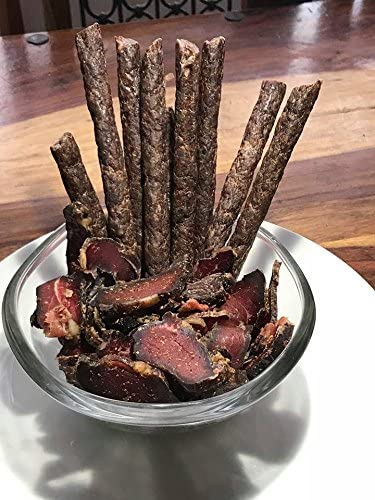
What is biltong and Droewors
Share
Most definitely trademark South African snacks. Biltong and Droewors are most definitely trademark South African snacks and represent for many an important area of South Africa food culture. In a country where meat is a daily dietary requirement for most people, these dried meat delicacies come in a variety of textures and flavours, depending on the meat used and the seasoning applied.
Generally speaking, South African dried meat, like Biltong and Droewors are made from beef which is hung to dry. Although beef biltong is probably the most popular kind of biltong, many people enjoy biltong made from game and even from ostriches.
Hunters' biltong would naturally be made from game, ranging from Kudu to Springbok. This kind of biltong can be purchased from commercial producers, but there are hunters who will make their own supply of biltong after going out hunting and bringing back a buck. Biltong, translated literally from Dutch as “rump-tongue,” is made by marinating the meat strips in a vinegar solution before adding spices and hanging to dry. The detailed ingredients of the marinade and the spices are what give each biltong it's own unique taste.
Droewors, equally as traditional as biltong, is quite different. The Afrikaans name droewors translates to “dry sausage,” which aptly describes the snack. It is made from narrow, dried coriander seed flavored sausage, known to South Africans as dunwors (thin sausage). Droewors is made from beef, as pork or veal tends to turn rancid if it is dried out. The droewors is dried quickly in warm and dry conditions, making it different to meats like salami.
